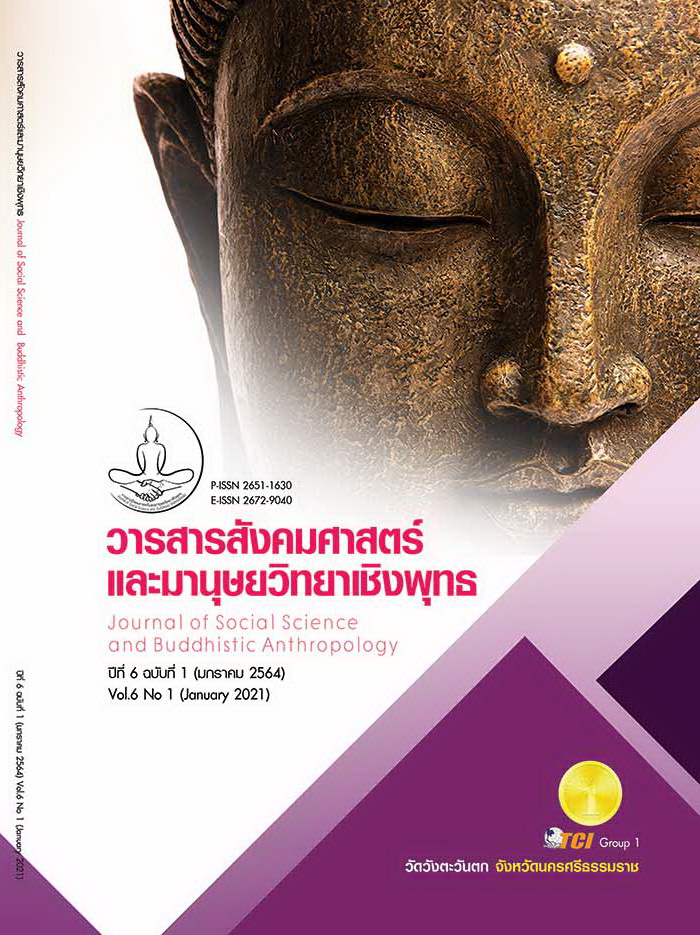MANAGEMENT STRATEGIES TO ENHANCE ENTREPRENEURSHIP OF THE NORTHEASTERN INDUSTRIAL AND COMMUNITY COLLEGE STUDENTS UNDER THE OFFICE OF VOCATIONAL EDUCATION COMMISSION
Keywords:
Strategy, Management, Entrepreneur, Student, College of CareersAbstract
This article is intended to: 1) studying the current and desirable conditions and management to strengthen the entrepreneurship of students. Northeast Group Career College. And 2) develop management strategies to strengthen students' entrepreneurship. Northeast Group Career College. This research is a mixed method of research quantitative, simple random queries are used. The sample groups are: 1) The school administrator/deputy director of the school, and 2) the teacher who performs the duties of the head of the department. total of 226 persons. Using statistics on frequency, percentage, mean, standard deviation. And analyze the priorities of the necessary needs PNIModified. And Qualitative use of interviews and focus group with a Purposive selection. key Information such as 1) academic 2) teacher 3) administrator and 4) business entrepreneur total of 8 persons. All of them are bachelor's degree or higher and have a working more than 5 years. By analyzing PNIModified and SWOT Analysis. The research was found that: 1) The present and desirable conditions There are 5 aspects: 1.1) curriculum development 1.2) teacher development 1.3) entrepreneurial incubator management 1.4) entrepreneurial characteristics and 1.5) cooperation with the establishment. And 2) developing management strategies. There are 9 strategies: 2.1) use innovation, develop skills, have commercial potential 2.2) strengthen creativity, have broad vision, look all around 2.3) see change as an opportunity to show talent 2.4) entrepreneurs The new generation in start-ups 2.5) Develop entrepreneurial incubation process through the SME project 2.6) Encourage and support teachers through entrepreneurial business training. 2.7) To have standardized knowledge in vocational teachers professional competency development 2.8) to educational institutions Provide bilateral education and 2.9) reform the curriculum of vocational teachers.
References
ณัฐสิฏ รักษ์เกียรติวงศ์. (2561). การปฏิรูปอาชีวศึกษาของประเทศไทย. กรุงเทพมหานคร: สถาบันวิจัยเพื่อการพัฒนาประเทศไทย (ทีดีอาร์ไอ).
ทวนชัย อรุณโรจน์ และเกรียงชัย ปึงประวัติ. (2557). ยุทธศาสตร์การพัฒนากำลังคนระดับอาชีวศึกษาของสาธารณรัฐประชาธิปไตยประชาชนลาว ให้สอดรับกับประชาคมเศรษฐกิจอาเซียน. วารสารมหาวิทยาลัยนครพนม, 4(2). 16-23.
นักวิชาการ คนที่ 5. (2563). กลยุทธ์การบริหารจัดการเพื่อเสริมสร้างความเป็นผู้ประกอบการของนักศึกษาวิทยาลัยการอาชีพกลุ่มภาคตะวันออกเฉียงเหนือสังกัดสำนักงานคณะกรรมการการอาชีวศึกษา. (ณัทฐศักดิ์ สำราญรื่น และคณะ, ผู้สัมภาษณ์)
บุญชม ศรีสะอาด. (2556). วิธีการทางสถิติสำหรับการวิจัย เล่ม 2. กรุงเทพมหานคร: สุวีริยาการพิมพ์.
พระราชบัญญัติการอาชีวศึกษา พ.ศ. 2551. (2551). ราชกิจจานุเบกษา หน้า 1 เล่มที่ 125 ตอนที่ 43 ก (5 มีนาคม 2551).
ลือชัย แก้วสุข. (2554). การพัฒนากลยุทธ์การบริหารสถานศึกษาอาชีวศึกษาเพื่อตอบสนองความต้องการกําลังคนของสถานประกอบการ. ใน ดุษฎีนิพนธิ์ครุศาสตรดุษฎีบัณฑิต สาขาบริหารการศึกษา. จุฬาลงกรณ์มหาวิทยาลัย.
วิทยาลัยการอาชีพกลุ่มภาคตะวันออกเฉียงเหนือ สังกัดสำนักงานคณะกรรมการการอาชีวศึกษา. (2562). สถิติข้อมูลนักเรียนนักศึกษา ปี 2562. เรียกใช้เมื่อ 19 มกราคม 2563 จาก http://techno.vec.go.th/th-th/บริการข้อมูล/ข้อมูลสถิติด้านการศึกษา/สถิติข้อมูลนักเรียนนักศึกษาปี2562.aspx
สำนักงานคณะกรรมการพัฒนาเศรษฐกิจและสังคมแห่งชาติ. (2559). สรุปสาระสำคัญแผนพัฒนาเศรษฐกิจและสังคมแห่งชาติ ฉบับที่สิบสอง พ.ศ. 2560-2564. กรุงเทพมหานคร: คณะกรรมการพัฒนาเศรษฐกิจและสังคมแห่งชาติ สำนักนายกรัฐมนตรี.
สำนักงานมาตรฐานการอาชีวศึกษาและวิชาชีพ. (2555). คู่มือการประกันคุณภาพภายในสถานศึกษาอาชีวศึกษา สำนักงานคณะกรรมการการอาชีวศึกษา กระทรวงศึกษาธิการ. กรุงเทพมหานคร: แผนกวิชาการพิมพ์วิทยาลัยเทคนิคมีนบุรี.
สำนักงานเลขาธิการสภาการศึกษา. (2560). แผนการศึกษาแห่งชาติ พ.ศ 2560-2579. กรุงเทพมหานคร: กระทรวงศึกษาธิการ.
สุชาติ ประสิทธิ์รัฐสินธุ์. (2556). การใช้สถิติในงานวิจัยอย่างถูกต้องและได้มาตรฐานสากล (พิมพ์ครั้งที่ 6). กรุงเทพมหานคร: สามลดา.
Cronbach, L. J. (1990). Essentials of psychological testing. New York: Harper Collins Publishers.
Cummings, T. G. & Worley, C. G. (2005). Organization Development and Change (8th ed.). Ohio: Thomson South-Western.
Davidsson, P. (1989). Entrepreneurship And After? A Study of Growth Willingness in Small Firms. Journal of Business Venturing, 4(3), 211-226.
Evans, D.S. (1987). Tests of Alternative Theories of Firm Growth. Journal of Political Economy, 95(4),657-674.
Ferreira, J. & Azevedo, S. (2007). Entrepreneurial Orientation as a main Resource and Capability on Small Firm’s Growth. Retrieved March 3, 2020, from https://mpra.ub.uni-muenchen.de/5682/
Kaikkonen, V. (2006). Exploring The Dilemmas Of Small Business Growth: The Case Of Rural Food-Processing Micro Firms. Journal of Enterprising Culture, 14(2), 87-104.
Krejcie, R. V., & Morgan, D. W. (1970). Determining Sample Size for Research Activities. Educational and Psychological Measurement, 30(3), 607–610.
Likert, R. (1967). The Method of Constructing and Attitude Scale. New York: Wiley & Son.








